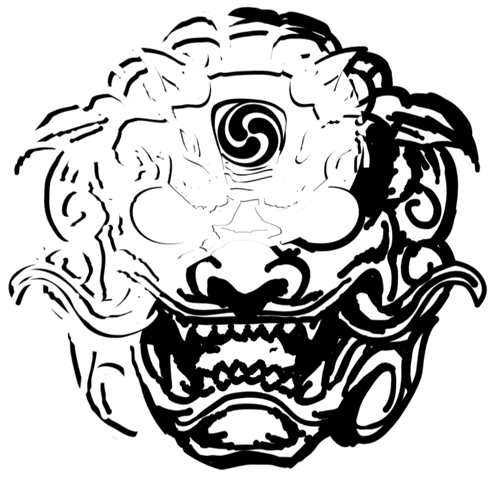begins near the outer canthus of the eye at TóngziliãoGB-1,crosses to the anterior portion of the ear at TinghuìGB-2 then ascends to the upper border of the zygomatic arch at Shangguan GB-3,• ascends to the corner of the forehead at Hànyàn GB-4 and descends via points Xuánlú GB-5, Xuánlí GB-6 and Qubin GB-7 to the region above the ear where it meets with Erhéliáo SJ-22,• curves posteriorly behind the ear to the mastoid process at Wangu GB-12, meeting with Jiaosün SJ-20 on the way,• curves upwards across the side of the head to the corner of the forehead at Touwei ST-8 and descends to the supraorbital region at Yángbái GB-14,• ascends and curves across the side of the head to Fengchi GB-20 below the occiput,- crosses the top of the shoulder via Jiānjing GB-21 and Tiãnliáo SJ-15 to meet with the spine at Dàzhui DU-14,• passes laterally via Dazhù BL-11 to Bingfeng SI-12 then anteriorly to enter the supraclavicular fossa at Quēpén ST-12.
A BRANCH
• emerges behind the ear and enters the ear at Yifeng
SJ-17,
• emerges in front of the ear and passes via Tinggõng
SI-19 and Xiàguãn ST-7 to the outer canthus,
• descends to the corner of the jaw near Daying ST-5,
• crosses the Sanjiao channel and rises to the infraorbital region, and meets with Jingming BL-1,
- descends to the neck, passing near Jiáchē ST-6 and intersecting Rénying ST-9 to rejoin the main channel in the supraclavicular fossa,
- descends into the chest, meeting with the Pericardium channel at Tianchi P-1,
• crosses the diaphragm, connects with the Liver and unites with the Gall Bladder,
• continues along the inside of the ribs to emerge in the inguinal region,
• encircles the genitals, runs superficially along the margin of the pubic hair then enters deeply to emerge at the sacral region where it meets the Bladder channel at Baliao (the four points of the sacral foramina) and the Governing vessel at Cháng qiáng
DU-1,
- emerges on the buttock at Huántiào GB-30.
ANOTHER BRANCH
• descends from the supraclavicular fossa to the anterior aspect of the axilla, then passes through Yuanye GB-22, Zhejin GB-23 and Riyuè GB-24,
- intersects the Liver channel at Zhangmén LIV-13,
• descends to the hip joint to meet the previous branch at Huántiào GB-30 and continues down the lateral aspect of the thigh and knee,
• descends along the lateral aspect of the lower leg to the anterior aspect of the lateral malleolus,
• follows the dorsal surface of the foot along the groove between the fourth and fifth metatarsals to end on the lateral side of the tip of the fourth toe at Zúqiàoyin
GB-44.
ANOTHER BRANCH
• separates on the foot at Zúlíngì GB-41 and runs between the first and second metatarsal bones to the medial tip of the big toe then through the toenail to Tink with the Liver channel.
The Gall Bladder primary channel connects with the following zangfu: Gall Bladder and Liver.
The Gall Bladder primary channel meets with other channels at the following points: Xiàguăn ST-7, Tóuwéi ST-8, Rénying
ST-9, Quepén ST-12, Bingfeng SI-12, Tinggõng SI-19, Jingming BL-1, Dàzhù BL-11, Shàngliáo BL-31, Ciliáo BL-32,
Zhöngliáo BL-33, Xialiáo BL-34, Tianchí P-1, Tianliáo SJ-15,
Yifēng SJ-17, Jiăosun SJ-20, Erhéliáo SJ-22, Zhängmén LIV-
13, Cháng qiáng DU-1, Dàzhui DU-14. Note: Băihuì DU-20 is classified as a meeting point of the Gall Bladder channel with the Governing vessel but is not conventionally shown as such on illustrations of the Gall Bladder primary channel.
